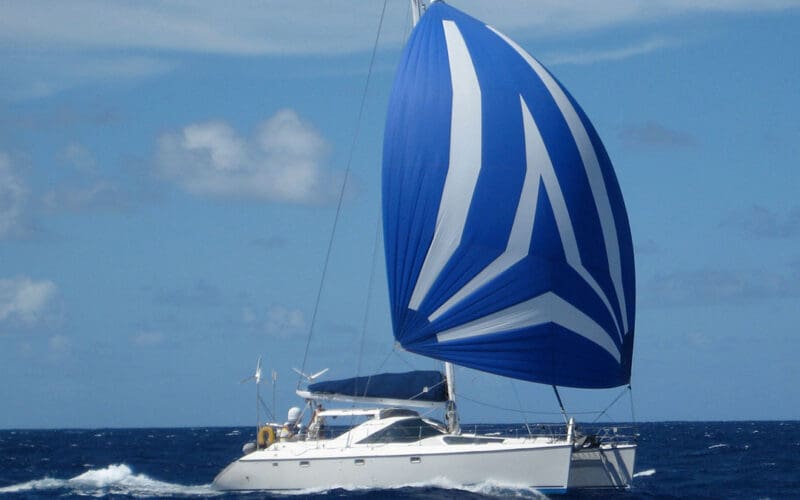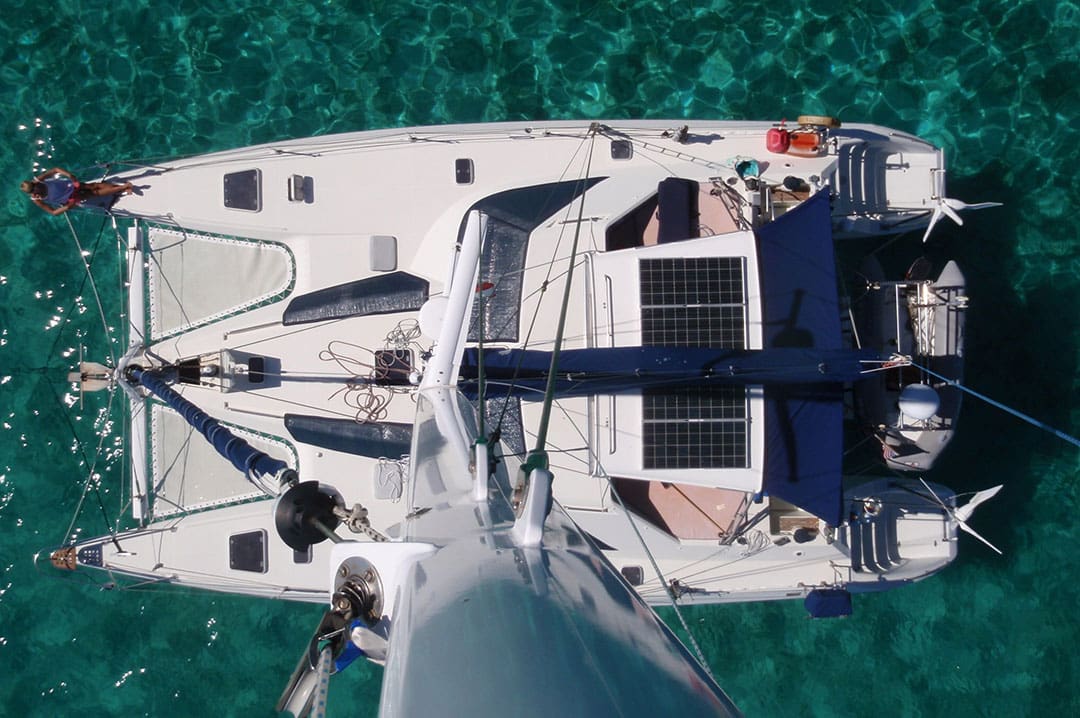
David and Booker Deakyne live and voyage aboard their Privilege 45 catamaran Tortuguita. Formerly a charter boat in the Caribbean, Tortuguita was purchased by a Belgian sailor who took the boat to Cuba for several years. Since spare parts were not readily available the boat fell into a state of disrepair. The boat was brought to Florida for sale and the Deakynes purchased it there in 2006. Dave then spent three months rebuilding the vessel’s systems before sailing it back to their home in New Jersey. They characterize that first voyage on their website this way: “Not much worked in those days but she floated and they made it.”
Since then the Deakyne’s — Dave is a former naval aviator and airline pilot and Booker worked as a retail credit fraud investigator and was also an airline flight attendant — have voyaged aboard Tortuguita and cruised extensively in Bermuda, the eastern Caribbean, the western Caribbean, through the Panama Canal, central America, French Polynesia, Australia, Indonesia and southeast Asia. Tortuguita is currently undergoing a major refit at Pangkor Island in Malaysia.
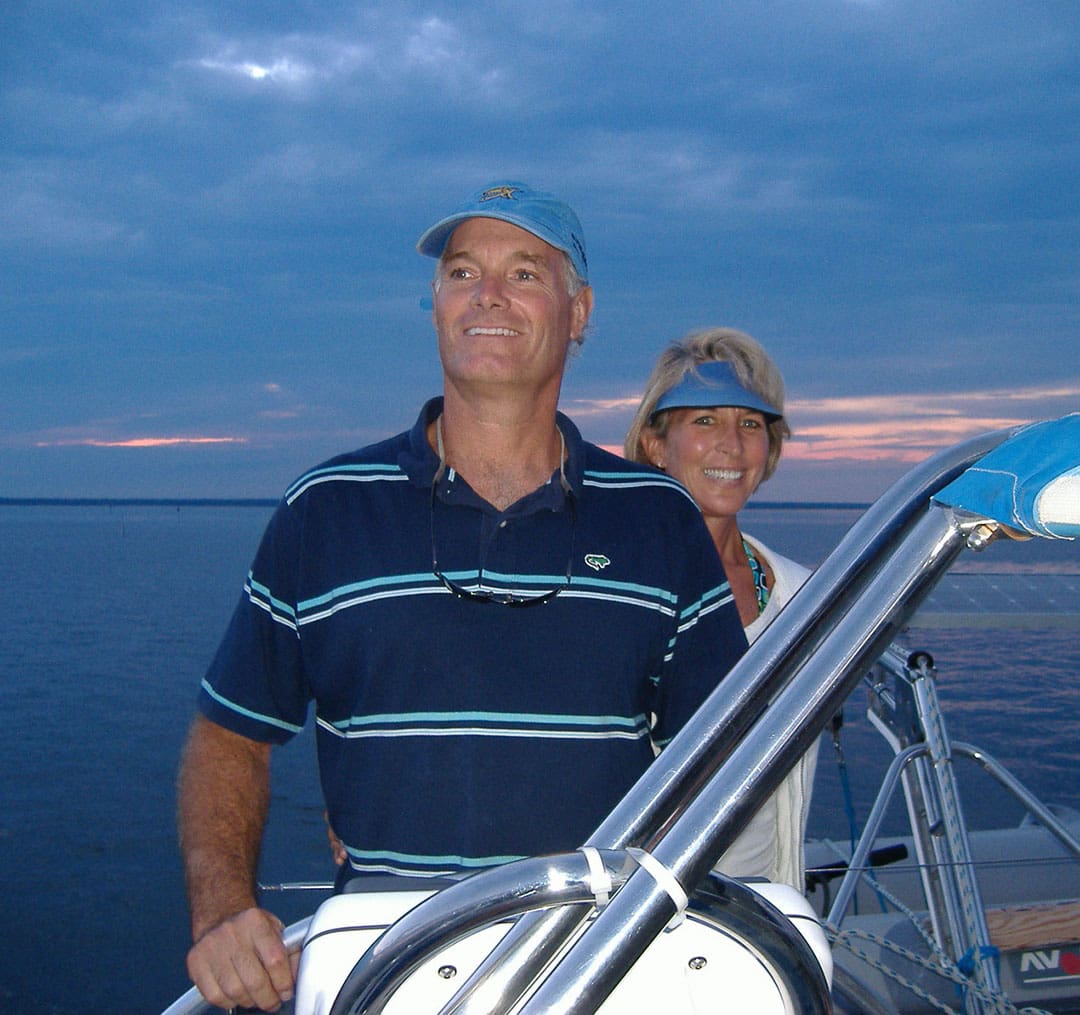
OV: How do you approach the subject of safety? Has your experience sailing offshore affected your thinking on safety?
D&BD: Our philosophy is “Don’t break the boat.” They break enough by themselves. It’s costly and you’re not getting to your destination without it. We pick good weather windows and don’t over-sail. It’s not a race. We keep a constant lookout for chafe and always use preventers. We don’t get pressured by “get-there-itus.” We start out with enough total diesel to motor more than 1,000 nautical miles in case we lose the rig and carry plenty of extra food.
Redundancy is important and catamarans provide inherent redundancy with dual rudders and engines but other backup systems are numerous. We have three depth sounders, eight bilge pumps, six ways to charge batteries and enough spare parts to McGuyver just about everything. We carry every component for a complete spare Raymarine autopilot. We have a desalinator and collect rain water off the hard Bimini. We didn’t always have all this but when something breaks, I buy the replacement, and a spare to carry around for the next time.
The human factor is also important. Always trust the intuition and input from the crew (wife). Some comments may seem silly at the time but are very valid. It is important to not write off their concerns and also include them in the decision making process.
OV: What planning do you do for a possible medical emergency? Did you receive any medical training before you began voyaging?
D&BD: The medical bag has a surgery and suture kit, lidocaine, bandages, splints, antihistamines, Stugeron, Epipens, and antibiotics. Silvadene wound bandages are great for rope burns.
We have a Philips AED Defibrillator that is not only for us but for any cardiac emergency that we can assist with. We’ve both had many AED and CPR courses through our careers.
OV: What type of life raft do you have? What do you have in your abandon ship bag?
D&BD: The life raft is a Survitec DSB six-man in a canister on our transom. The boat came with two Bombard Zodiac rafts but at 15 years, all the seams were unglued.
Our grab bag has the EPIRB, flares, two handheld GPS units, aviation band VHF, Leatherman, pliers, dry bags, survival books, fishing kit, waterproof flashlight, emergency desalinator, small waterproof USB solar panel, nicad batteries and charger.
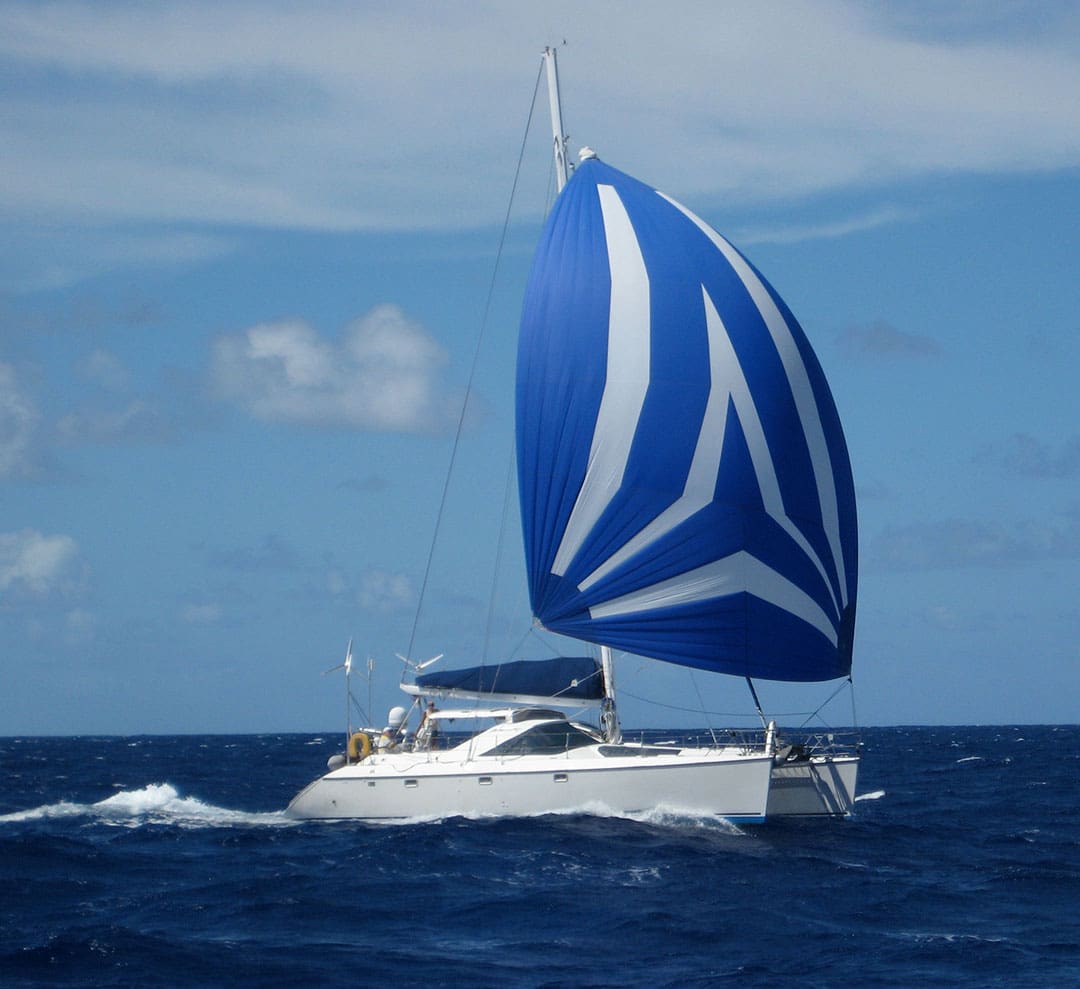
OV: Do you have an EPIRB, PLB or a tracking/messaging device like an InReach or SPOT?
D&BD: We have a 406 EPIRB for disasters. For MOB, we have a McMurdo S20 Personal AIS in each life vest. Also in the vests are a small air horn and a strobe light. The watch stander also clips an Icom handheld VHF to their vest. We have the watch stander drop a waypoint on the chart plotter every half hour in case they go overboard. This will give a last known location to narrow the search.
OV: Do you actively use radar for collision avoidance?
D&BD: We use radar during night coastal passages due to the fishing vessels and fish trap buoys. The Garmin HD digital radar picks up small unlit wooden fishing boats one half to one mile away which lets us know where to visually search. We occasionally use the radar to verify the accuracy of the Chart Plotter cartography when entering anchorages and we never enter an unfamiliar anchorage at night.
Our biggest use of the radar is for weather avoidance. We will use the radar overlay to place storm tracks on the chart plotter and look for CBDR.
OV: Do you have an AIS unit on board?
D&BD: Yes, the AIS is a great device. The radar horizon from the top of the mast is much further than we can see from the cockpit and the unit’s calculation of closest point of approach (CPA) is much more accurate than I can estimate. We run a small laptop 24 hours a day with OpenCPN displaying the AISs GPS position and contacts. The OpenCPN laptop is also used for anchor watch at all times. The AIS is also fed to the Garmin chart plotter which is used while underway.
OV: What types of weather data do you use on your voyage? How do you gather weather information?
D&BD: We use the SSB for HAM and Sailmail. Of course, there are limitations in coverage, transmission speed, and frequency congestion but it has worked well for us. I was a Net weather briefer crossing the Western Pacific and was able to get everything I needed before the HF Net began in the morning.
Due to limited connectivity in the Indian Ocean, we will be using a satellite-based device for that passage and the South Atlantic in addition to the HF radio.
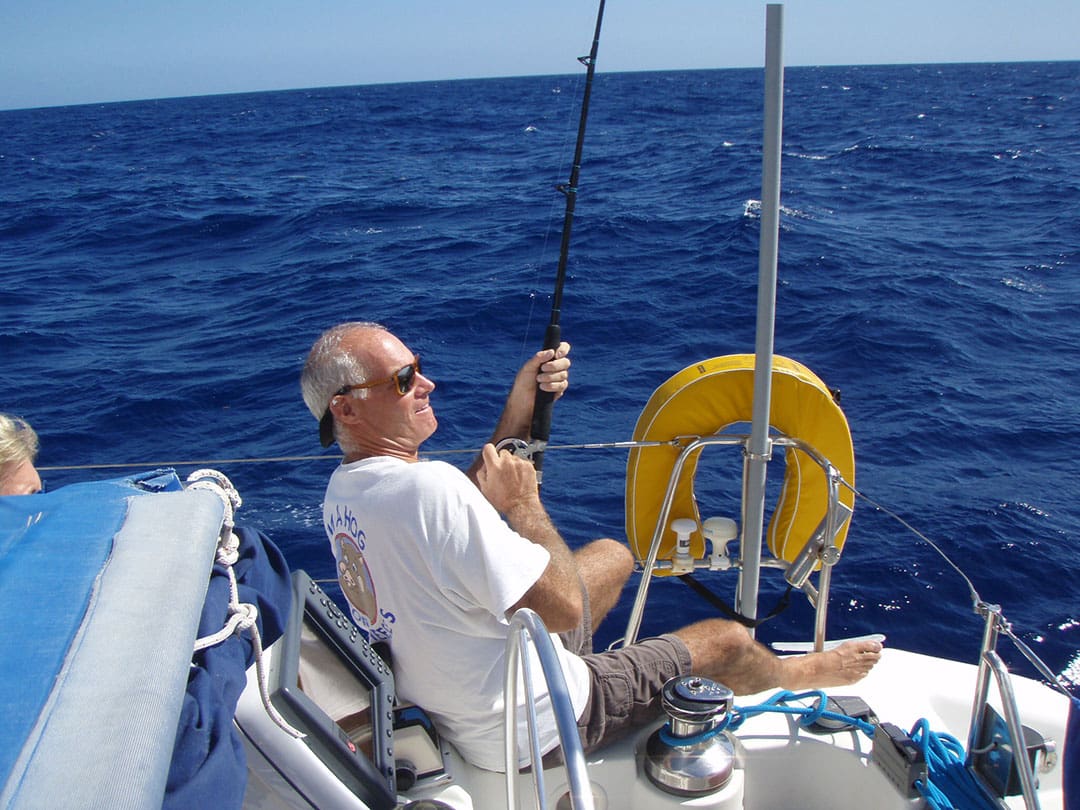
OV: Do you use a weather routing service?
D&BD: As a pilot and DIY kind of guy, I figured I could do that myself. We had the pleasure of Herb Hilgenberg routing us in the Atlantic but I’m not the kind of person that needs hand holding. Picking a good weather window before departure while you have Internet access is the key. Once underway, we have to rely only on Saildocs and grib files. On the passage to French Polynesia we had a friend email daily weather updates.
The weakest link with self routing is real time satellite images. The quality of NOAA satellite images and weatherfax degrades the further offshore you go and is pretty much unusable mid-ocean.
If someone is using a router and has other information, I will take that into advice but it will always be my call, not a Buddy Boat or the pack. In reality, you are the captain and it’s your responsibility for the safe passage. Predict Wind seems like a great tool and I look forward to using it to aid in future passages.
OV: What storm tactics do you use?
D&BD: Sooner or later, you have to deal with bad weather. For a catamaran, our boat heaves-to well. It’s actually more like fore-reaching but it’s a good tactic that lets us get rest or wait out the weather.
We will trail warps if overpowered downwind under bare poles. Warps are under rated and have gotten us out of some bad situations. They are easy to deploy and retrieve, especially in bad weather. We had a sea anchor that was never used but has been replaced by a Jordan Series drogue which we have also not yet needed to use.
OV: What are your future voyaging plans?
D&BD: Plans always change but we will be staying around SE Asia for another year or so and then crossing the Indian Ocean to South Africa. Then onward back to the Caribbean. ν

